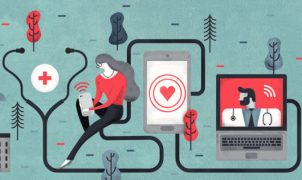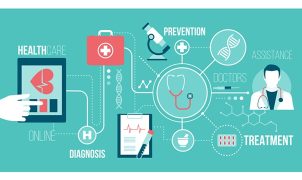The on going COVID-19 pandemic has shed light on the wide range of symptoms associated with the virus. As we strive to navigate through these challenging times, understanding COVID-19 symptoms is of paramount importance. In this essay, we will delve into the various symptoms of COVID-19, ranging from common to less-known manifestations, while emphasizing the significance of early detection and seeking medical attention.

1. Common Symptoms: Recognizing the Usual Signs
COVID-19 often presents with common symptoms that are similar to those of other respiratory infections. These include fever, cough, and shortness of breath. A sudden loss of taste or smell, known as anosmia, has also been identified as a distinctive symptom associated with the virus. Recognizing these common signs is crucial in preventing the spread of the virus, as individuals exhibiting these symptoms should self-isolate and seek testing promptly.
2. Atypical and Less-Known Symptoms: Expanding the Spectrum
As research on COVID-19 progresses, healthcare professionals have identified atypical and less-known symptoms that can manifest in infected individuals. These symptoms may include gastrointestinal issues like nausea, vomiting, and diarrhea. Additionally, COVID-19 has been linked to neurological symptoms such as headaches, confusion, and even strokes. The wide range of symptoms highlights the complexity of the virus and underscores the importance of a comprehensive approach to diagnosis and management.
3. Long COVID: Lingering Effects and Complications
For some individuals, the symptoms of COVID-19 can persist long after the initial infection has resolved. This condition, often referred to as “long COVID” or “post-acute sequelae of SARS-CoV-2 infection” (PASC), involves a range of persistent symptoms. These can include fatigue, shortness of breath, joint pain, and cognitive difficulties. Long COVID emphasizes the need for ongoing medical care and research to better understand the long-term effects of the virus.
4. Variants and Symptom Variation: Unraveling the Complexity
The emergence of COVID-19 variants has introduced an additional layer of complexity to symptom recognition. Some variants, such as the Delta variant, have been associated with different symptom profiles. This underscores the importance of staying informed about the latest developments in the virus and its variants to ensure accurate symptom recognition and appropriate response.
5. The Importance of Early Detection and Medical Attention: Mitigating Spread
Early detection of COVID-19 symptoms is critical not only for individual health but also for preventing further spread. Timely testing and isolation of infected individuals can help curb transmission and protect vulnerable populations. Moreover, seeking medical attention in a timely manner is essential, particularly for individuals with underlying health conditions who may be at higher risk of severe illness.
6. Public Health Measures: A Collective Effort
Understanding and recognizing COVID-19 symptoms play a crucial role in the broader context of public health measures. Wearing masks, practicing good hand hygiene, maintaining physical distance, and adhering to quarantine guidelines are essential steps in curbing the spread of the virus. By following these measures and promptly addressing symptoms, we contribute to safeguarding our communities.
In conclusion, COVID-19 symptoms encompass a wide spectrum, from common signs to atypical manifestations and long-term effects. Recognizing and understanding these symptoms are pivotal in controlling the spread of the virus and ensuring prompt medical care. As the pandemic continues to evolve, staying informed, practicing preventive measures, and seeking medical attention when needed remain essential components of our collective response.
The Complexity of COVID-19 Symptoms: Navigating the Spectrum
The global impact of the COVID-19 pandemic has brought to light the intricate and often unpredictable nature of its symptoms. This essay aims to provide a comprehensive exploration of the complexities surrounding COVID-19 symptoms, highlighting the variability, atypical presentations, and the challenges of accurate diagnosis.

1. The Multifaceted Symptom Spectrum: Beyond the Obvious Signs
COVID-19 symptoms go beyond the commonly known fever, cough, and shortness of breath. While these are prominent indicators, the virus showcases its complexity through a myriad of presentations. From mild cases with minimal symptoms to severe respiratory distress, the virus can affect individuals differently. This variation underscores the importance of recognizing that COVID-19 can manifest in numerous ways.
2. The Unpredictable Atypical Symptoms: Redefining Recognition
In addition to the conventional symptoms, COVID-19 has introduced a series of atypical manifestations that challenge our understanding of the virus. Gastrointestinal symptoms like abdominal pain, diarrhea, and nausea have been reported. Neurological symptoms such as loss of taste and smell, headaches, and confusion have also emerged. This unpredictability necessitates a broader awareness of potential symptoms to ensure accurate identification.
3. Variants and Shifting Presentations: The Moving Target
The emergence of COVID-19 variants has introduced a new layer of complexity. Variants like Delta have shown altered symptom profiles, potentially affecting different age groups and demographics. As the virus continues to evolve, staying informed about the evolving symptomatology is crucial for timely intervention and accurate diagnosis.
4. Long COVID and Lingering Effects: A Prolonged Challenge
A growing concern within the COVID-19 landscape is the phenomenon known as long COVID. Some individuals experience symptoms that persist for weeks or months after the acute phase of the infection. Fatigue, brain fog, and persistent shortness of breath can significantly impact daily life. This extended symptom duration highlights the need for ongoing research and support for those grappling with post-COVID complications.
5. Diagnostic Challenges and Early Intervention: Navigating Uncertainty
Accurate diagnosis of COVID-19 symptoms remains a challenge, especially given the overlap with other respiratory illnesses. The lack of specificity in the early stages of infection can delay proper medical attention and contribute to the virus’s spread. Rapid testing, increased access to healthcare, and ongoing research are crucial in enhancing diagnostic accuracy.
6. The Role of Healthcare Professionals: Guiding Diagnosis and Care
Healthcare professionals play a pivotal role in navigating the complexities of COVID-19 symptoms. Their expertise helps in differentiating between COVID-19 and other conditions, determining the appropriate course of action, and providing support for those dealing with persistent symptoms or long COVID.
7. Raising Public Awareness: Empowering Individuals
Public education and awareness campaigns are essential in ensuring that individuals are well-informed about the diverse range of COVID-19 symptoms. By recognizing the less common manifestations, individuals are more likely to seek timely medical attention and take the necessary precautions to prevent transmission.
In conclusion, the COVID-19 pandemic has highlighted the intricate nature of its symptoms, spanning a broad spectrum from common to atypical presentations. As we continue to grapple with the challenges posed by the virus, staying informed, advocating for increased access to testing and healthcare, and raising public awareness about the evolving symptomatology remain vital components of our global response.












 Welcome to LawyerNote, your premier destination for expert legal counsel tailored to your unique needs. At LawyerNote, we specialize in navigating the complexities of the legal system, offering comprehensive solutions to our valued clients. With a team of seasoned attorneys covering diverse fields including corporate law, family law, and criminal defense, we’re equipped to handle a wide spectrum of legal matters. Our unwavering commitment to excellence, integrity, and client satisfaction sets LawyerNote apart. Whether you’re grappling with a complex litigation case or seeking guidance on business transactions, LawyerNote is your trusted legal partner every step of the way.
Welcome to LawyerNote, your premier destination for expert legal counsel tailored to your unique needs. At LawyerNote, we specialize in navigating the complexities of the legal system, offering comprehensive solutions to our valued clients. With a team of seasoned attorneys covering diverse fields including corporate law, family law, and criminal defense, we’re equipped to handle a wide spectrum of legal matters. Our unwavering commitment to excellence, integrity, and client satisfaction sets LawyerNote apart. Whether you’re grappling with a complex litigation case or seeking guidance on business transactions, LawyerNote is your trusted legal partner every step of the way.




